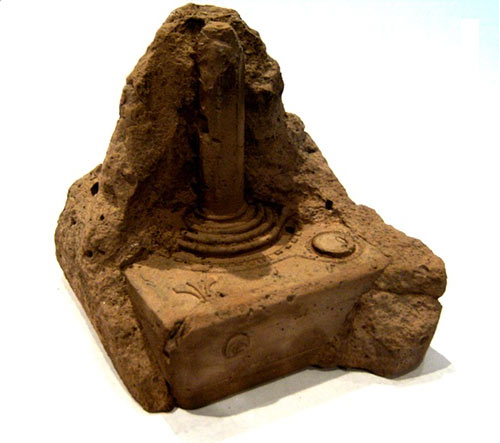kottke.org posts about atari

Vice has a sometimes less-than-flattering profile of Best Electronics’ Bradley Koda, a persnickety entrepreneur who has an unrivaled catalog of old-school Atari console parts and a reputation for shutting out buyers who get impatient with doing things his way:
Among Atari fans, Best is almost as famous for ignoring and blacklisting badly behaved customers as it is for selling Atari parts. A first attempt to buy from Best Electronics is a sink-or-swim proposition: learn the rules, or accept your fate…
Koda is a monopolist, of a sort, but he’s no Jeff Bezos. Best Electronics has no virtual shopping cart, or any other Amazon-esque conveniences. The store’s website looks the same as it has since the early 2000s: it’s a lengthy, multicoloured text scroll, as if Jack Kerouac quit the novel-writing business (but not the benzedrine) and started typing about Atari…
Anyone who can’t figure out this system risks being deemed a time-waster. In emails to customers, Koda often laments his busy schedule, and he seems to take distractions personally. He would rather lose a sale than suffer someone who hasn’t learned the rules.
Best has been in business more than 25 years. Its equipment is mostly unused Atari originals, not salvaged parts. The company’s catalog was printed more than 20 years ago (and is available only in print); corrections (including changes in price) are only available online. His customers both love him and fear him.
In short, it’s a throwback to old-school nerd retail, the kind lampooned by The Simpsons’ Comic Book Guy. What, did you think finding first-rate replacement parts for your forty-year old video game machine would be like buying AA batteries?

The Art of Atari showcases the design of the iconic company’s video game packaging, advertisements, catalogs, and other stuff. Judging from my reaction to just the cover, I might die of nostalgia if I were to see the inside. Might be worth the risk though.
See also season 3 of Boss Fight Books featuring books on SMB3, Mega Man 3, Katamari Damacy, and more. (via df & @robinsloan)
Atari’s Greatest Hits is a free iOS game that come bundled with Pong and the option to purchase 99 more classic arcade and 2600 games. Available games include Tempest, Missle Command, Crystal Castles, Centipede, and Asteroids, some of which are multiplayer over Bluetooth. (via df)
Artist Christopher Locke makes fossil sculptures of extinct technology, including cassette tapes, rotary telephones, and boom boxes.

A guy who started working as a game programmer for Atari when he was 21 years old recounts his experiences, notably his work on the Donkey Kong cartridge.
Basically, Atari’s marketing folks would negotiate a license to ship GameCorp’s “Foobar Blaster” on a cartridge for the Atari Home Computer System. That was it. That was the entirety of the deal. We got ZERO help from the original developers of the games. No listings, no talking to the engineers, no design documents, nothing. In fact, we had to buy our own copy of the arcade machine and simply get good at the game (which was why I was playing it at the hotel - our copy of the game hadn’t even been delivered yet).
(via girlhacker)
Todd Levin begins a series on video game systems he has known. He starts off with a Radio Shack Pong knockoff and the Atari 2600. As you may remember, there were some differences between the arcade version of Pac-Man and and the Atari version:
But most disorienting of all was the hero: Pac-Man had been re-imagined as an octagon with a constantly chomping, greedy slot for a mouth, and designed so large he could scarcely squeeze through the maze. Because of Pac-Man’s macrocephalic condition, he was incapable of rounding corners, but Atari found a brilliant workaround: Pac-Man would always face west. When pushing the joystick to the right, Pac-Man simply backed into dots and energy blocks, his mouth still opening and closing rhythmically, as if crying in pain from shoving things into his rectum. Underscoring Atari Pac-Man’s overall cognitive disorder, the home game replaced the familiar rhythmic dot-munching soundtrack with a flat, repeating “bonk” note — its own digital Tourrette’s bark.
The following is a great 2004 BBC documentary about Tetris, the man who created it, and the lengths that several companies went to in order to procure the rights to distribute it. Tetris - From Russia With Love:
Alexey Pazhitnov, a computer programmer from Moscow, created Tetris in 1985 but as the Soviet Union was Communist and all, the state owned the game and any rights to it. Who procured the rights from whom on the other side of the Iron Curtain became the basis of legal wranglings and lawsuits; the Atari/Nintendo battle over Tetris wasn’t settled until 1993. There’s an abbreviated version of the story, but the documentary is a lot more fun. A rare copy of the Tengen version of Tetris, which was pulled from the shelves due to legal troubles, is available on eBay for around $50.








Stay Connected